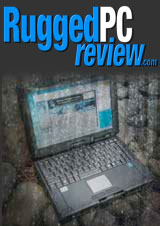|
|
DURABOOK Z14I generations
|
|
|
|
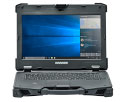
|

|

|
|
|
DURABOOK model
|
Z14I (2018)
|
Z14I (2022)
|
Z14I (2025)
|
|
|
Weight
|
7.9 lb
|
7.9 lb
|
7.9 lb
|
|
|
Intel Processor
|
8th generation
|
11th generation
|
Core Ultra Series 1
|
|
|
Graphics
|
Intel UHD
|
Intel Iris Xe
|
Intel Graphics
|
|
|
Luminance
|
1000 nits
|
1000 nits
|
1200 nits
|
|
|
Discrete Graphics
|
opt. Nvidia GTX 1050
|
opt. Nvidia GTX 1050
|
opt. Nvidia RTX A500
|
|
|
Standard Storage
|
SATA Hard disk or SSD
|
PCIe NVMe SSD
|
PCIe NVMe SSD
|
|
|
Optional Storage
|
SATA SSD
|
2nd: SATA SSD
3rd: SATA SSD
|
2nd: PCIe NVMe SSD
3rd: SATA SSD
|
|
|
RAM
|
8-32GB 2400MHz DDR4
|
8-64GB 3200MHz DDR4
|
16-64GB 5600MHz DDR5
|
|
|
Max Battery capacity
|
84.2 + 50.8 watt-hours
|
84.2 + 50.8 watt-hours
|
74.5 + 50.8 watt-hours
|
|
|
USB Type-A
|
2 x USB 3.1
1 x USB 2.0
|
1 x USB 3.2 Gen 1
1 x USB 3.2 Gen 2
1 x USB 2.0
|
1 x USB 3.2 Gen 1
1 x USB 3.2 Gen 2
1 x USB 2.0
|
|
|
USB Type-C
|
1 x USB 3.1
|
1 x USB 3.2 Gen 2 w/ DP
|
2 x Thunderbolt 4
|
|
|
Thunderbolt 4
|
No
|
Yes
|
Yes
|
|
|
Wi-Fi
|
AC 9260, 802.11ac
|
Wi-Fi 6 AX201
|
Wi-Fi 7 BE200
|
|
|
Bluetooth
|
Bluetooth 5.0
|
Bluetooth 5.3
|
Bluetooth 5.4
|
|
|
Drop spec
|
6 feet
|
6 feet
|
6 feet
|
|
|
Sealing
|
IP65
|
IP65
|
IP66
|
|
|
Starting price
|
US$3,599
|
US$3,599
|
inquire
|
The table to the right shows how the DURABOOK Z14I platform has developed since it was launched in 2018. We're almost exclusively talking tech update here — newer and faster processors, more and faster memory, much and faster primary storage, faster wired and wireless communication, Thunderbolt 4 and more.
Unlike trendy consumer tech, there is no need for professional rugged tech to change each year just for the sake of it. What's needed on a laptop for the job is a clean, logical full-size keyboard, a bright and legible display, enough RAM and storage, all the ports that one might need, enough performance to run the latest software, and, of course, a tough enough build to keep the machine from harm and failing on the job.
As a result, on the storage side the Z14I platform has moved from first hard disks to solid state disk, first with the SATA and then the much faster NVMe interface standard.
Today's RAM is much faster than what was in the first Z14I. Both WiFi and Bluetooth moved to ever faster and more efficient standards. USB Type-A, too, moved to faster and faster standards, and then added USB-C and Thunderbolt 4. On the graphics side, VGA gave way to HDMI and DisplayPort, and now mostly goes through TB4 ports. Optional discrete graphics became much more powerful. PC Card gave way to ExpressCard, SD card to microSD, and SIMs to NanoSIM and eSIM. 5G was added.
But all through that, Durabook made sure legacy tech remains supported: serial ports, VGA video, optical drives, as well as military-grade connectors and expansion box options for RAID 0/1/5/10 and so on.
Durabook also has a history of making every effort to always offer customers the latest possible Intel technology — not an easy task given the rapid-fire release of new processor generations. On that side, the newest DURABOOK Z14I now comes with the choice of one of four Intel Core Ultra Series 1 CPUs. Our review unit was equipped with a Core Ultra 7 165U with a total of 14 processing threads, as well as Intel AI Boost neural processing units.
The DURABOOK Z14I is a very tough machine. It uses heavy-duty magnesium alloy for its hefty chassis and part of the exterior, very solid display hinges, and a fully integrated carry-handle. It feels way more solid than lighter rugged designs, let alone any consumer laptop. All ports and slots are behind protective doors. Unlike lesser ruggeds, the Z14I is pretty much a fully sealed machine, now at an ever higher level than before (IP66 instead of IP65 — able now to handle strong jets of water. And unlike most of the rugged competition, Durabook uses passive cooling on the Z14I. That means no ventilation slots that can get clogged, and no noisy fan that might fail or leak.
Design, look, and feel — purposeful and timelessly elegant
The product photography compilation below shows the DURABOOK Z14I from the top and all four sides. Even after six years, the Z14I remains an undeniably attractive design that looks good on pictures and even better in person. The strong magnesium alloy chassis and bottom mean the computer doesn't creak and twist like most plastic-based consumer laptops. The body of the Z14I is black, the top of the LCD case is a dark matte silver-gray with a powder-coat finish, black accents, and a designated logo area (Durabook machines often sell in rebadged versions). The top of the LCD case is contoured to add extra stiffness.
Much like the rugged S14I model, the fully-rugged Z14I perfectly projects the tough tool-for-the-job look common to most heavy-duty rugged notebooks. The beefy LCD hinges offer good resistance when opening and closing the laptop. When folding the Z14I closed, a spring-loaded latch snaps into place, securing the LCD in the laptop's closed position. To open it again, you push a spring-loaded lock.
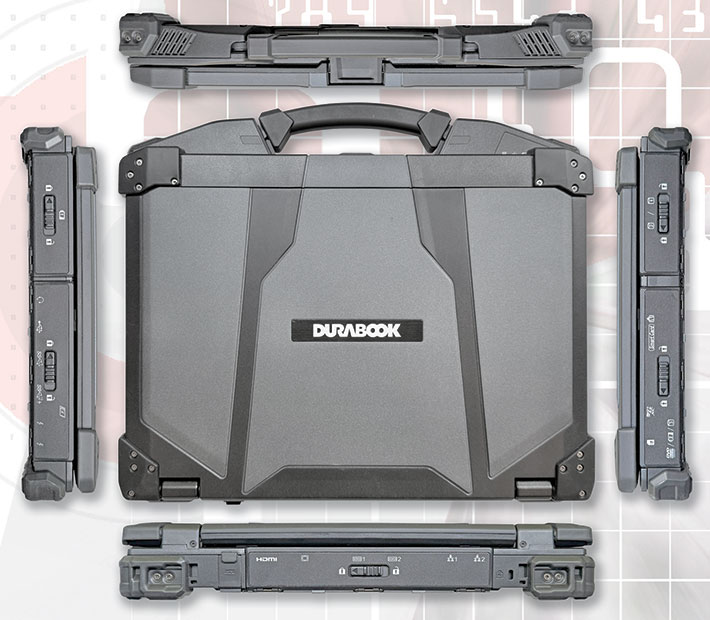
Ports and connectivity are placed on the left, right and back sides of the laptop. The ports on each side are located behind hinged plastic covers with sliding locks that protect against physical damage and are also designed to provide full protection against dust and liquids. All covers are screwed on and therefore are, if need be, replaceable.
The two pictures below show a more detailed view of the left and right side of the DURABOOK Z14I.
On the right side (top picture below), from left to right, first is the compartment for the main battery. To the right of that is a large stacked I/O area that on the upper level has an ExpressCard card 54 slot (the optional PC Card Type II slot is no longer available); and on the lower level an audio combo jack, a USB 2.0 Type A port, two USB 3.2 Type A ports (one of them supports charging even when the computer is off), and two Thunderbolt 4 port.
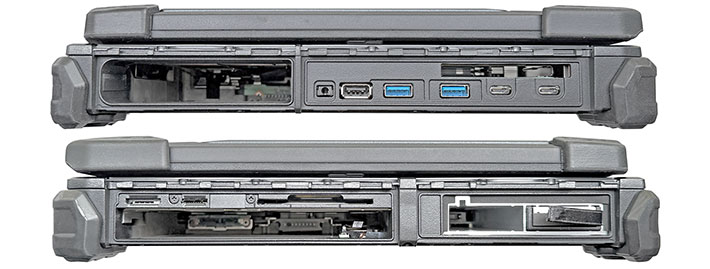
On the left side (bottom picture below), from left to right is another large double-decker I/O area with, on top from left to right, a Nano SIM card slot, a microSD card slot, and a Smart Card reader. Below that is the media bay that can accommodate either an optical disk drive, a secondary battery pack, or a tertiary storage caddy. To the right of the bay the the storage drive compartment that holds the quick-release solid state disk either one or two SSD storage drives.
On the back of the machine, from left to right, is the power jack, then a large I/O area with, again from left to right, an HDMI port, a VGA port, two legacy DB9 RS232 serial ports, and two RJ45 LAN jacks. Next to that is a Kensington-compatible physical lock slot. Yes, physical security remains important.

Below is what the DURABOOK Z14I looks like from the bottom. On the left is the unit fully assembled. Note the substantial rubber corner guards that provide protection and also a sure footing for the laptop. There is a grand total of eight of them, each screwed on and easily replaceable. On the right is a look at the underside of the Z14I with its bottom corner guards removed abd its three major I/O compartment doors open. Note how each port is clearly labeled with white-on-black description or icon.
What you don't see are access doors to module (i.e. RAM, WWAN, WLAN, GPS, storage, etc.) compartments. There aren't any. Those modules are accessed from the top instead. That way those modules can be accessed even when the Z14I is bolted onto its optional expansion chassis.
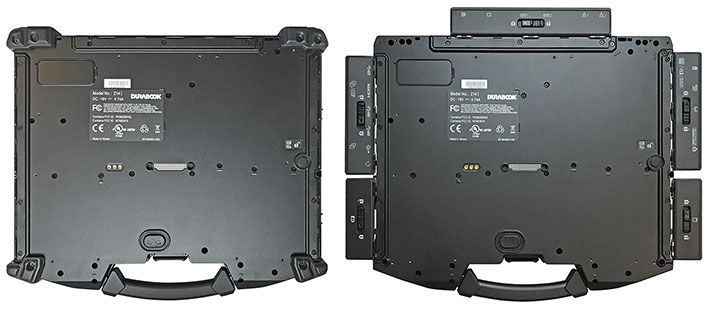
So how can you get to the two RAM memory slots and the other expansions lots? That's not immediately obvious. They are all located underneath the keyboard, and to access them you first have to flip open the keyboard. That requires taking off the plastic hinge and function button cover (four small screws, two in the front and two in the rear, then carefully unclipping the cover), then flipping the keyboard over towards the front of the laptop, and removing the screws that hold the two module compartment covers in place (eight tiny screws for the left side cover, six for the right side c
over over the RAM). Keep track of the two keyboard ribbon cables that must be firmly seated in their respective connectors.
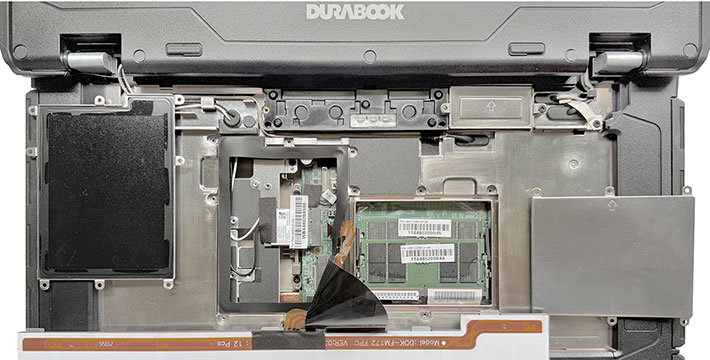
We generally open up all review units that pass through the RuggedPCReview.com test lab. That's because ruggedness starts inside. A good rugged unit is built rugged from the ground up. With most laptops, the bottom of the unit comes off and affords a full look at at the insides. The DURABOOK Z14I's designers, however, took a dfferent approach, one where all electronics sit in the strong system box and it is the keyboard side that comes off.
This type of the design actually makes a lot of sense as it provides a structurally very strong basis, in essence a box with a top that comes off. The drawback when opening up the unit is that there are usually ribbon and other cables between the electronics and the keyboard top of the unit.
One area where the Z14I is different from most of the competition is its choice of passive cooling instead of active cooling with a mechanical fan. The company's trademarked "Coolfinity" fanless cooling aims to maximize reliability by removing a component — the fan — that a) consumes power, b) represents is a potential point of failure, c) may vacuums dust and other debris into the device, d) results in potentially unwanted airflow, and e) generates noise when absolute silence may be required (or desired).
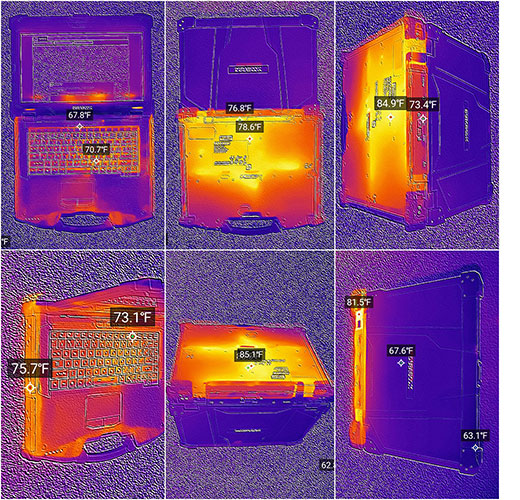 Mechanical fans, on the other hand, can sustain higher performance under continuous heavy load, can better deal with thermal spikes caused by CPU and/or GPU bursts, and may offer more management flexibility in hot-running high performance hardware.
Mechanical fans, on the other hand, can sustain higher performance under continuous heavy load, can better deal with thermal spikes caused by CPU and/or GPU bursts, and may offer more management flexibility in hot-running high performance hardware.
We can see both sides of the argument, and we also got a glimpse of the copper tubing that syphons heat off the processor and ancillary electronics and disseminates it into the thick and heavy magnesium alloy bottom of the laptop. This works remarkably well; even without a cooling fan, the big DURABOOK barely heated up.
The pictures on the left were taken with our infrared/thermal camera while the Z14I was running benchmarks. The bright yellow areas is where the DURABOOK heated up most. This new model with Core Ultra Series 1 165U processor remained almost unbelievably cool during all benchmark runs. It actually ran cooler the 2nd gen model even with 15/57 watt processor compared to the 12/28 watt chip in the predecessor model. It is amazing how much heat a heavy metal chassis, combined with sophisticated thermal management, can soak up, spread, and disseminate. Keeping temperatures reasonably low has a direct impact on overall systems performance. That's because maximum achievable processor "turbo" clock speeds, and how long a system can run at high clock speeds, depend on temperature readings. That said, passively cooled systems require different, more conservative thermal settings, something that durabook has years of experience with.
Also interesting is the Z14I's internal construction with numerous daughterboards providing services to the mother board. This type of design provides room for customization, easy replacement of modules, and easy tech updates.
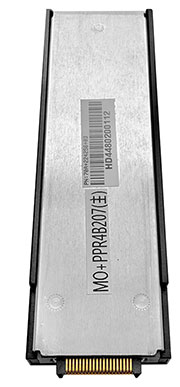
 While our review unit came without dedicated GNSS, Durabook offers an optional ublox NEO-M9N discrete GNSS module. The last generation Z14I we tested came with a ublox M8N module that was able to track up to three of the four major GNSS systems concurrently, those being GPS (the US system), GLONASS (the Russian version of GPS), the European Galileo, and the Chinese BeiDou. The NEO-M9N, on the other hand, can concurrently connect to four GNSS systems, an obvious advantage. The ability to track all four systems means a larger number of available satellites, making for quicker starts, even better accuracy, as well as broader coverage.
While our review unit came without dedicated GNSS, Durabook offers an optional ublox NEO-M9N discrete GNSS module. The last generation Z14I we tested came with a ublox M8N module that was able to track up to three of the four major GNSS systems concurrently, those being GPS (the US system), GLONASS (the Russian version of GPS), the European Galileo, and the Chinese BeiDou. The NEO-M9N, on the other hand, can concurrently connect to four GNSS systems, an obvious advantage. The ability to track all four systems means a larger number of available satellites, making for quicker starts, even better accuracy, as well as broader coverage.
The DURABOOK Z14I has two SODIMM RAM slots. Our review machine came with two 32GB DDR5 RAM sticks. One of the two PCIe M.2 expansion sockets of our tester was used for WiFi (an Intel Dual Band Wi-Fi BE200 with Bluetooth 5.4 in our unit); the other can be used for optional mobile WWAN. Both have prewired antenna leads.
In earlier generations of the Z14I, primary and secondary mass storage both used to be in a removable box that fit flush into the left side of the laptop. In the third generation, there are now two separate adjacent storage adjacent compartments for the primary and secondary storage canisters. This allows for quick removal of storage, something that is often a requirement in enterprise and government settings.
The basic standard configuration of the DURABOOK Z14I comes with a 256GB NVME PCIE SSD for primary storage, with up to 2TB available, twice as much as in the last gen. Optional secondary storage also uses fast NVME PCIE SSD up to 2TB now, presumably making RAID 0 (got maximum speed and capacity or RAID 1 (for complete redundancy) possible. That may seem a small thing, but it can be a major makes for big performance and reliability improvement compared to the SATA III SSD secondary storage the predecessor version came with. The Z14I can also accommodate optional tertiary storage, albeit of the slower SATA SSD variety.
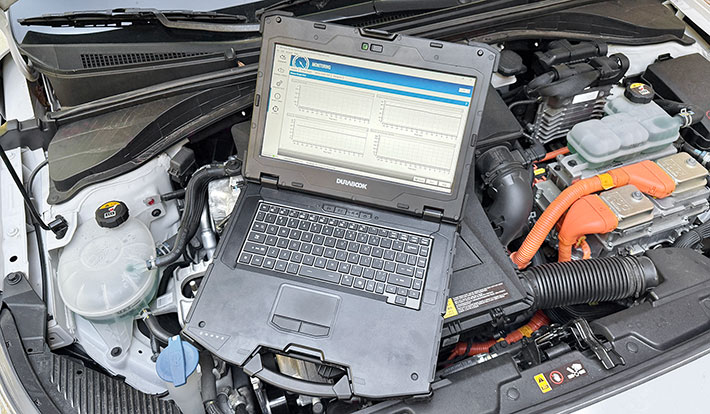
Keyboard and touch pad — pleasant
 The latest DURABOOK Z14I is virtually unchanged. It is full-scale and has 88 keys. The key design is the standard "island" style with flat keys and minimal travel but good tactile feedback, as is common in today's laptop and even desktop keyboards. The only visible change is that the "hamburger key", the one with the three stacked lines that brings up menus or navigation bars, has been replaced by a "Copilot" key that launches the Microsoft Copilot AI assistant.
The latest DURABOOK Z14I is virtually unchanged. It is full-scale and has 88 keys. The key design is the standard "island" style with flat keys and minimal travel but good tactile feedback, as is common in today's laptop and even desktop keyboards. The only visible change is that the "hamburger key", the one with the three stacked lines that brings up menus or navigation bars, has been replaced by a "Copilot" key that launches the Microsoft Copilot AI assistant.
The central QWERTY layout is 100%-scale, which means the distance between the center of the Q key on the left and the P key on the right is 6.75 inches. That makes it perfect for touch typists. The keys are black with white letters, numbers and symbols. Optionally available is an LED keyboard backlight with brightness adjusted via function keys.
Below the keyboard is the unit's capacitive touch pad. It is a properly sized (not too small, not too large) touch area with a slight frame around it so your fingers feel the extent of the pad, and with two large mouse buttons in front of it. The mouse buttons require a relatively firm press and issue an audible mechanical click. The touch pad is very responsive and easy to use, and it can even be operated with gloves on (as long as they are not too thick).
Above the keyboard are two programmable function buttons, three status indicator lights (disk activity, numlock, capslock), and then power/sleep button.
Intel Core Ultra Series 1 processors
So far, each new generation of the DURABOOK Z14I has made a three Intel Core processor generation leap forward. When Durabook originally designed the Z14I platform back in 2018, it was based on the "Kaby Lake Refresh" 8th generation, the one that brought, for the first time, quad-core, octa-thread designs to Intel's ultra-low voltage (i.e. 15 watt) mobile processor lineup.
In 2021, the second gen Z14I was based on Intel's "Tiger Lake" 11th generation of Core processors. Tiger Lake brought the first new microarchitecture in several years, the long awaited switch to 10nm process technology, scalable thermal design power, Intel Iris Xe integrated graphics, Thunderbolt 4 support, and more. And, for the first time ever, Intel allowed manufacturers to "tune" processors to optimally match their hardware as well as the requirements of their target customers.
And now, the third gen Z14I made another big leap to Intel's Core Ultra Series 1 processors that not only benefits from the power/economy core hybrid architecture that was introduced in the "Alder Lake" 12th generation and optimized in the "Raptor Lake" 13th gen, but also introduced a tile-based chip design and the addition of a dedicated Neural Processing Unit (NPU).
In direct response to the booming focus on all things AI, Intel refers to the new Neural Processing Units as "Intel AI Boost." That's because typical "artificial Intelligence" workloads are fundamentally different from traditional serial processing where one task is done after the other, or at the most handled by a small number of parallel processing cores.  AI processing, however, is more parallel in nature and emphasizes floating point processing, sort of like dedicated graphics processors work.
AI processing, however, is more parallel in nature and emphasizes floating point processing, sort of like dedicated graphics processors work.
There's no denying that AI is having an explosive impact on almost everything. It doesn't seem a fad or a passing trend. As of now, almost nothing is clearly defined just yet and things are evolving at rapid pace. The industry talks of "AI-PCs" and you see the label "AI-ready" everywhere. In essence, the thrust is to have chips that can help with all this new AI activity. For now it's mostly just helping along with AI-assisted or AI-oriented tasks, but more and more also to be able to locally run large AI-models on mobile systems even without access to the cloud.
As of this writing (September 2025), of the primary fully-rugged laptop competition, the Panasonic Toughbook 40 and Dell's Pro Rugged 14 are also at Intel Core Ultra Series 1 processors, while Getac's B360 line is at Core Ultra Series 2. Winmate, DT Research and others are at 12th and/or 13th generation Core processors. No one stays ahead for long in today's rapid-fire processor technology race.
As is, here's a list of the Intel Core Ultra Series 1 processor options available for the DURABOOK Z14I (to view the full Intel spec table for these four CPUs, see here):
|
DURABOOK Z14I: Processor options
|
|
|
Core Ultra 7
|
Core Ultra 7
|
Core Ultra 5
|
Core Ultra 5
|
|
Model
|
165U
|
155U
|
135U
|
125U
|
|
Generation/code name
|
Core Ultra Series 1
|
Core Ultra Series 1
|
Core Ultra Series 1
|
Core Ultra Series 1
|
|
Performance Cores
|
2 (4 threads)
|
2 (4 threads)
|
2 (4 threads)
|
2 (4 threads)
|
|
Efficient Cores
|
8
|
8
|
8
|
8
|
|
Max Turbo Performance cores
|
4.90 GHz
|
4.80 GHz
|
4.40 GHz
|
4.30 GHz
|
|
Max Turbo Efficient cores
|
3.80 GHz
|
3.80 GHz
|
3.60 GHz
|
3.60 GHz
|
|
SmartCache
|
12MB
|
12MB
|
12MB
|
12MB
|
|
Thermal Design Power (base/turbo)
|
15/57 watts
|
15/57 watts
|
15/57 watts
|
15/57 watts
|
|
Graphics
|
Intel Graphics
|
Intel Graphics
|
Intel Graphics
|
Intel Graphics
|
|
Graphics max speed
|
2.00 GHz
|
1.95 GHz
|
1.90 GHz
|
1.85 GHz
|
|
Intel vPro
|
Yes, Enterprise
|
Yes, Essentials
|
Yes, Enterprise
|
Yes, Essentials
|
|
Intel Total Memory Encryption
|
Yes
|
No
|
Yes
|
No
|
|
Intel SIPP
|
Yes
|
No
|
Yes
|
No
|
|
Intel One Click Recovery
|
Yes
|
No
|
Yes
|
No
|
|
AI Boost NPU
|
Yes
|
Yes
|
Yes
|
Yes
|
The difference between the four available processors are minor. All have two performance cores and eight economy cores. All have the same graphics and the same amount of Intel SmartCache. For the most part, it's just relatively small differences in processing clock frequency.
There is, however, one difference that may be important to customers who rely on managing and securing enterprise PCs: Intel's decision to split vPro into an "enterprise" set and an "essentials" set can be major. In terms of management, security and performance features, as well as cost and integration, "enterprise" offers a lot and "essentials" doesn't. So keep all that in mind when picking the right chip.
To see what kind of performance the 3rd gen DURABOOK Z14I can achieve with its Core Ultra Series 1 PU, we ran our standard benchmark suites, PCMark 10, Passmark 6 and 9, CrystalMark, 3D Mark, and GeekBench that all include dozens of tests covering CPU, 2D graphics, 3D graphics, memory, and disk. Increasingly important are benchmark suites that exercise the kind of processing relevant to AI tasks. We ran some of those, but did not include the results because we don't yet have enough data for meaningful comparisons.
To provide an idea where the new DURABOOK Z14I stands in terms of overall performance, the below table includes results of the prior generation DURABOOK Z14I as well as the company's S14I rugged laptop, as well as the latest Z14I' Tier 1 competition from Getac, Dell, and Panasonic.
The results are as follows:
|
DURABOOK Z14I 2025 in context
|
|
PERFORMANCE COMPARISON
|
Durabook
|
Durabook
|
Durabook
|
Getac
|
Dell
|
Panasonic
|
|
Model
|
Durabook Z14I
|
Durabook Z14I
|
Durabook S14I
|
B360 G3
|
Pro Rugged 14
|
Toughbook 40
|
|
Year tested
|
2025
|
2022
|
2025
|
2025
|
2024
|
2024
|
|
Processor
|
Intel Core
|
Intel Core
|
Intel Core
|
Intel Core
|
Intel Core
|
Intel Core
|
|
Processor Model
|
Ultra 7 165U
|
i7-1165G7
|
Ultra 7 155U
|
Ultra 7 255H
|
Ultra 7 165U
|
i7-1185G7
|
|
Code name
|
Meteor Lake
|
Tiger Lake
|
Meteor Lake
|
Arrow Lake
|
Meteor Lake
|
Tiger Lake
|
|
Thermal Design Power (TDP)
|
15/57 watts
|
15/28 watts
|
15/57 watts
|
28/115 watts
|
15/57 watts
|
12/28 watts
|
|
P-core base clock
|
1.70GHz
|
2.80GHz
|
1.60GHz
|
2.00GHz
|
1.70GHz
|
1.60GHz
|
|
P-core turbo clock
|
4.90GHz
|
4.70GHz
|
4.90GHz
|
5.10GHz
|
4.90GHz
|
4.10GHz
|
|
CPU Cores/Threads
|
10/12
|
4/8
|
10/12
|
16/16
|
10/12
|
4/8
|
|
Graphics
|
Intel Iris Xe
|
Intel Iris
|
Intel Iris Xe
|
Intel Arc 140T
|
Intel Iris Xe
|
Intel Iris Xe
|
|
Display
|
14.0-inch 1920x1080
|
14.0-inch 1920x1080
|
14.0-inch 1920x1080
|
13.3-inch 1920x1080
|
14.0-inch 1920x1080
|
14.0-inch 1920x1080
|
|
Display Luminance
|
925 nits
|
1150 nits
|
1008 nits
|
1230 nits
|
906 nits
|
1235 nits
|
|
Cooling
|
Passive
|
Passive
|
Active (fan)
|
Active (fan)
|
Active (fan)
|
Active (fan)
|
|
Weight
|
8.11 lbs as tested
|
8.75 lbs as tested
|
5.25 lbs as tested
|
5.31 lbs as tested
|
5.50 lbs as tested
|
7.88 lbs as tested
|
|
PassMark 6.1
|
8,027
|
8,788
|
10,543
|
11,244
|
10,201
|
5,066
|
|
PassMark 9.0
|
5,453
|
4,800
|
5,191
|
8,243
|
6,342
|
4,459
|
|
CrystalMark
|
458,758
|
463,662
|
442,548
|
670,398
|
522,901
|
417,042
|
|
PCMark10 Overall
|
5,603
|
4,623
|
5,450
|
7,436
|
5,742
|
4,630
|
|
-- PCMark10 Essentials
|
9,614
|
9,472
|
8,802
|
10,857
|
9,925
|
9,177
|
|
-- PCMark10 Productivity
|
7,872
|
6,441
|
8,093
|
9,179
|
9,590
|
6,519
|
|
-- PCMark10 Content Creation
|
6,307
|
4,395
|
6,169
|
11,199
|
7,327
|
5,128
|
|
PCMark10 Drive
|
1,284
|
944
|
1,697
|
1,342
|
2,104
|
1,248
|
|
PCMark10 Battery
|
10:04 hrs with
74.5 whr battery
|
09:41 hrs with
84.2 whr battery
|
20:21 hrs with
149.0 whr battery
|
10:11 hrs with
62.7 whr battery
|
08:52 hrs with
107.0 whr battery
|
05:55 hrs with
68.0 whr battery
|
|
Watt-Hours/hour
|
7.40
|
8.67
|
7.32
|
6.16
|
12.07
|
11.49
|
|
3DMark Time Spy
|
2,026
|
1,232
|
2,050
|
4,190
|
2,336
|
1,163
|
|
GeekBench 5 Single Core
|
1,627
|
1,391
|
2,169
|
2,087
|
1,769
|
1,358
|
|
GeekBench 5 Multi Core
|
6,644
|
4,088
|
6,358
|
11,859
|
8,787
|
3,816
|
|
GeekBench 5 Open CL
|
14,405
|
12,168
|
18,010
|
39,950
|
19,270
|
12,419
|
What do these numbers show? Compared to its direct predecessor, the new model is quicker in most areas that count. In somed ways it's a bit like comparing apples to oranges. The new chips have more computing cores and threads, but the older 11th gen chips had four power cores and the new 14th gen chips just two. So in some older benchmarks that primarily test single core performance, the new model isn't faster. But in the big, comprehensive benchmarks — PassMark 9 and PCMark10 — the new Z14I is overall about 20% faster, and even more so in graphics tasks. And all the economy cores in the new processors help as well: despite higher performance, the new Z14I consumes fewer watt-hours per hour.
Compared to Durabook's own S14I, which we tested with the slightly slower 155U processor, the Z14I is at roughly the same performance level, even though the Z14I is passive-cooled and the S14I has a fan.
The passive-cooled the Z14I isn't quite as quick as the fan-cooled Dell Pro Rugged 14 that uses the same processor — that is to be expected in all-out sustained performance tests where a fan is better able to cool on demand. The Z14I beats the last Toughbook 40 we tested in almost every category, but in the meantime Panasonic has updated the big Toughbook 40 to 14th generation chips as well. Sadly, Panasonic hasn't sent us a sample for testing.
In the meantime, of course, Intel Core Ultra Series 2 products are coming on the market, bringing with them substantial advances in several areas.
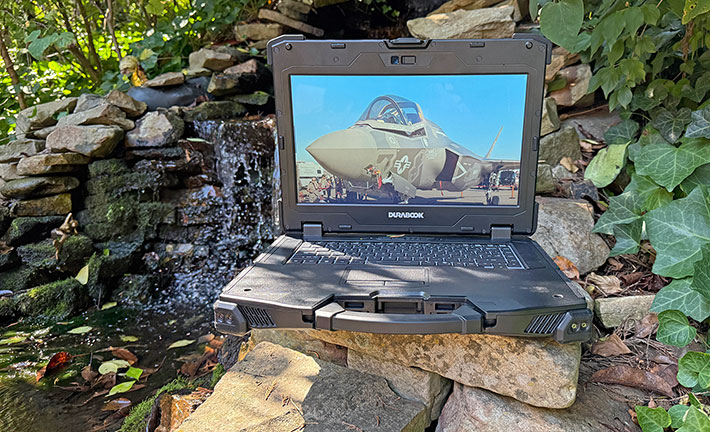
What does "AI PC" really mean?
Artificial Intelligence has quickly become part of the mainstream tech conversation. ChatGPT and other large language models are the most visible examples, but AI also shows up in more focused applications such as real-time image classification, natural-language interfaces, and predictive analytics.
When Durabook announced the 3rd-generation Z14I in mid-2024, they highlighted the system's integrated Neural Processing Unit (NPU) and optional NVIDIA RTX A500 GPU as enablers of "anytime, anywhere AI." In practice, what this means is that the Z14I can accelerate certain AI workloads locally, without relying on the cloud. That's important for rugged systems, which often operate in areas where broadband is intermittent or unavailable.
Unlike conventional computing tasks that are handled almost entirely by the CPU, AI processing can be distributed across CPU, GPU, or NPU. Each has strengths: CPUs offer general flexibility, GPUs provide high throughput for parallel math, and NPUs are designed for the specific matrix operations that dominate neural networks. The industry is still working toward a model where all three cooperate seamlessly, but the direction is clear.
This also ties into the concept of "edge AI." Rather than pushing everything to the cloud, devices like the Z14I can run smaller or domain-specific models directly on the machine. In the field, that might mean local speech recognition, real-time translation, on-device image analysis from cameras or drones, or predictive maintenance alerts based on sensor data. These are concrete, near-term use cases that benefit from having an NPU available.
So can the Z14I do "AI in the field"? With the right software, yes. It won't run large language models locally, but it can handle lighter, targeted workloads. Durabook's decision to integrate NPU capability into a fully rugged laptop early on was a good step in what will likely become a standard requirement in the industry over the next product cycles.
Power draw and battery life
It is one of the frustrations of modern life that mobile technology — the very tech that needs to be as small and light as possible — is also the tech that needs a battery that lasts as long as possible between charges. The proper sizing of laptop batteries, especially, is an exercise of give and take. A big battery makes for impressive battery life, but it comes at the cost of extra size and weight.
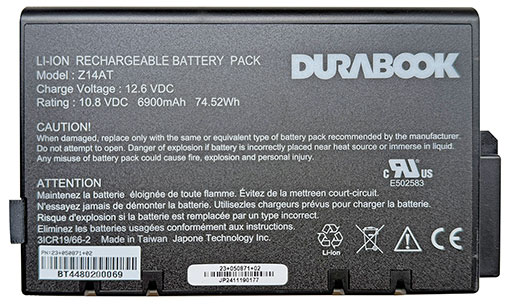 Weight, of course, matters with fully-ruggeds as it does with any other mobile computer, but not quite as much. This class of laptops usually weighs 7-9 pounds, and a bit more or less doesn't make that much of a difference. So with the Z14I, Durabook went with a big 74.52 watt-hour battery that weighs 13 ounces all by itself. Interestingly, that's actually 10 watt-hours less than the main battery in the prior generation Z14I.
Weight, of course, matters with fully-ruggeds as it does with any other mobile computer, but not quite as much. This class of laptops usually weighs 7-9 pounds, and a bit more or less doesn't make that much of a difference. So with the Z14I, Durabook went with a big 74.52 watt-hour battery that weighs 13 ounces all by itself. Interestingly, that's actually 10 watt-hours less than the main battery in the prior generation Z14I.
Still, 74.52 watt-hours isn't bad, and if that's not enough, there's still the optional smaller secondary battery rated at 51 watt-hours. That goes into the expansion/media bay (in lieu of an optical drive or secondary storage) and brings combined battery capacity up to an impressive 125 watt-hours.
How long does the DURABOOK Z14I last on a charge of its primary battery? Is the optional second battery needed/advisable? As is our standard procedure, we used Passmark Software's BatteryMon power management benchmark utility to measure the laptop's power draw under various operating conditions.
First we set the Windows 11 power options to "Best Power Efficiency" and display brightness to its lowest setting. That way we saw an idle power draw of 4.6 watts. We then cranked the backlight up to 50%, and draw increased to 7.3 watts. Then we cranked brightness all the way up to 100% and saw 11.3 watts.
|
DURABOOK Z14I G3 Power Draws (at idle)
|
|
Backlight level
|
Darkest
|
50%
|
Brightest
|
|
Max Battery
|
4.6 watts (16.2 hrs.)
|
7.3 watts (10.3 hrs.)
|
11.3 watts (6.6 hrs.)
|
|
Max Performance
|
6.2 watts (12.0 hrs.)
|
7.4 watts (10.1 hrs.)
|
13.1 watts (5.7 hrs.)
|
We then set the laptop to "Best Performance." At the lowest brightness setting we saw an idle power draw of 6.2 watts. At 50% brightness draw increased to 7.4 watts. And at the maximum standard brightness setting, electric draw reached 13.1 watts.
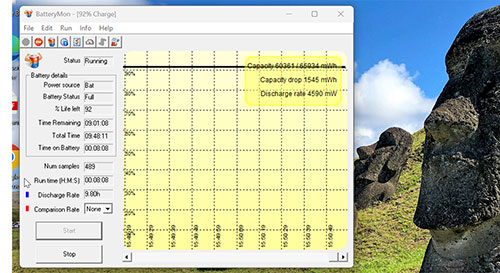 What do those power draw figures mean in terms of projected battery life? Equipped with just the standard battery, our review Z14I had a battery capacity of 74.56 watt-hours. Dividing that by the 4.6 watt minimum observed draw would indicate 16.2 hours of theoretical battery life with the system staying awake the whole time. In the maximum performance settings and the very bright maximum brightness, theoretical battery life would drop all the way to 6.6 hours.
What do those power draw figures mean in terms of projected battery life? Equipped with just the standard battery, our review Z14I had a battery capacity of 74.56 watt-hours. Dividing that by the 4.6 watt minimum observed draw would indicate 16.2 hours of theoretical battery life with the system staying awake the whole time. In the maximum performance settings and the very bright maximum brightness, theoretical battery life would drop all the way to 6.6 hours.
Realize that battery life estimates are entirely of the "your mileage will vary" kind. It all depends on settings, backlight brightness, and how the machine is used. The PCMark 10 Battery Test where the machine runs constantly varying typical tasks without ever even going to sleep yielded 10:04 hours. That's actually 23 minutes longer than the second gen Z14I, despite the new machine having a bit less battery capacity and significantly higher performance.
Durabook's own estimate is 12.5 hours with the standard battery. That's within the margin of error compared with our 13.1 hour result based on power draw, and also with the 10 hour run time on the PCMark 10 Battery test. In general, we'd expect a laptop to last a full shift on a charge, and the Z14I does that and then some. In this class of machine where weight usually is of lesser importance, unless an optical drive or secondary mass storage is absolutely needed, we'd suggest getting the secondary 51 watt-hour battery instead. It only adds about 10 ounces of weight, but several hours more running time.
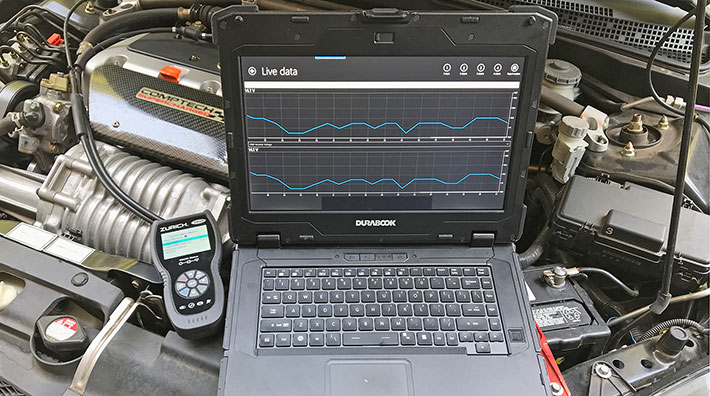
Display — very bright and great reflection control
The DURABOOK Z14I's display measures 14 inches diagonally, which is standard for this type of laptop. Its 1920 x 1080 pixel resolution is much more pleasant to work with than the marginal 1366 x 768 that used to be the norm for rugged and semi-rugged laptops for years. 1920 x 1080 resolution makes for 157 pixels per inch, not high by smartphone or tablet standards, but well matched for Windows 11 on a laptop. 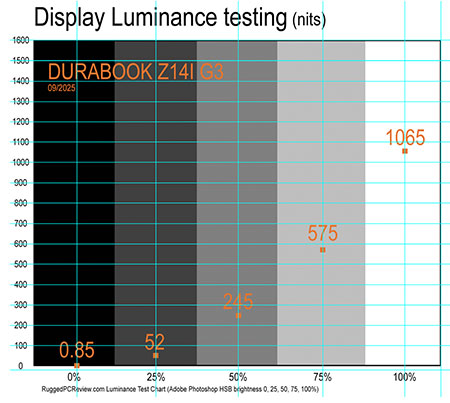
The fully-rugged Z14I comes standard with a brilliant DynaVueŽ display that's now rated at higher 1,200 nits luminance (up from 1,000 nits). There are easily accessible stealth and night vision modes that may be required by some customers and agencies.
And since it may rain our there in the field, or it's cold and users wear gloves, the standard 10-point capacitive multi-touch Z14I display can be switched to finger/water, glove, or stylus only modes, or touch can be turned off altogether.
We used RuggedPCReview's luminance testing equipment and our custom luminance chart to see how bright the Z14I is at various levels. Our test chart shows grayscale bands from 0% to 100% in Adobe Photoshop HSB brightness in 25% increments.
As the image to the right shows, with a maximum recording of 1,150 nits the Z14I display is close to its 1,200 nits rating.
The screen isn't just bright and vibrant and easily suitable for all all outdoor use; its surface is semi-matte, eliminating most of the annoying reflections common to most of today's consumer notebooks, and there seems to be a degree of anti-glare applied to it. When we tested the second generation Z14I in 2022, its display was very bright, but showed color and contrast variations at different viewing angles. We asked Durabook about it back then, and the answer was that due to industry supply chain issues, they had to change the panel source. Good news: that problem has been resolved, and the screen in the latest Z14I is rock-solid without any color or contrast variations from any angle!
The picture below shows the Z14I outdoors on an average October day around noon. The display backlight wasn't even set to full brightness. The screen looks bright, vibrant and very readable.
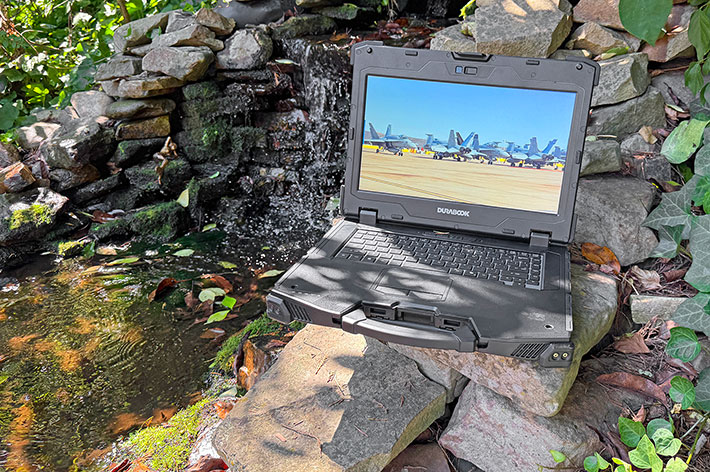
The images below shows the DURABOOK Z14I in typical light influx scenarios. Here you can notice slight brightness variations. That's because the semi-matte display of the Z14I does not reflect; instead, it diffuses direct light and that results in the slight milkiness when viewed from certain angles.
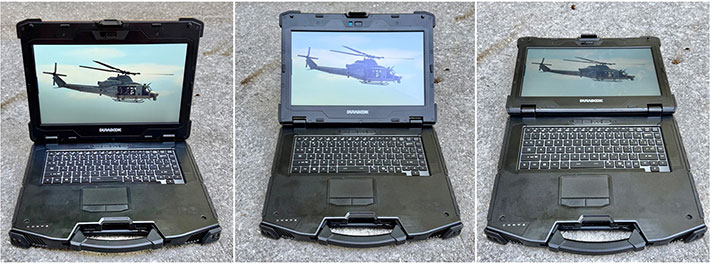
Overall, the DURABOOK Z14I display is excelled, much better than the one in the predecessor model. It is very bright and contrasty indoors, and it remains very readable even in strong sunlight. Looking into the future, maybe with ever increasing processing power and the accompanying ever more complex software applications, can we hope for 4k next?
Expansion and accessories
When the third gen DURABOOK Z14I was introduced, the media release highlighted its wealth of customization options. In addition to plenty of standard and optional I/O, there is an expansion box that provides either two slots of PCIe interface cards for various custom solution builds, there are military-grade connectors, and there are storage security extensions with RAID 0/1/5/10 configurations. All this can be quickly installed in the field to transform the Z14I into a portable server or the exact right solution for specific tasks. 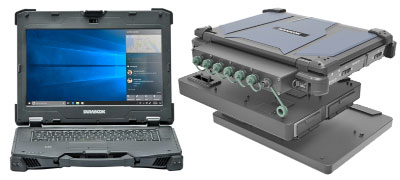
Customization, of course, is just one of the things what sets the built-to-order approach often required by industrial markets apart from mass-produced consumer technology. Depending on the scope, customization can be done in various ways. Internal expansion bays, plug-in and bolt-on modules are examples used by various rugged systems manufacturers.
Durabook chose a multi-tiered approach that includes a) above-average onboard connectivity and onboard I/O options, b) dedicated office and vehicle docks, each of which adds additional comms/video ports and antenna pass-throughs, and c) a variety of expansion boxes that bolt onto the bottom of the laptop and communicate via a 41-point surface-mount docking port.
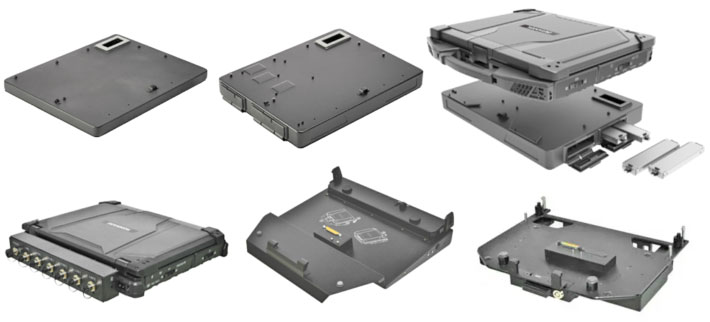
Fully-rugged
As a fully-rugged laptop, the DURABOOK Z14I has two goals. One is to provide to provide Durabook's customers with tough, reliable laptop for use in challenging environments. The other is to meet or beat the fully-rugged laptop competition from Getac, Dell, DT Research, Panasonic and others in the field.
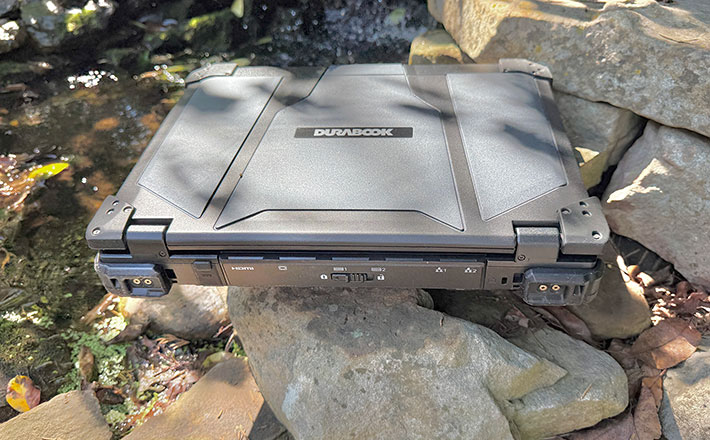
While ruggedness metrics include a long list of tests, two stand out. What kind of a drop can a laptop survive? And how well is it protected against liquids and particulates. The former is measured in feet and testing is performed according to MIL-STD-810H procedures. The latter is expressed in an IP Ingress Protection rating.
What Durabook did with the DURABOOK Z14I is build it so it can handle 6-foot drops and get an IP66 rating. That's way tougher than semi-ruggeds, and with it the DURABOOK Z14I can meet the major competition head-on.
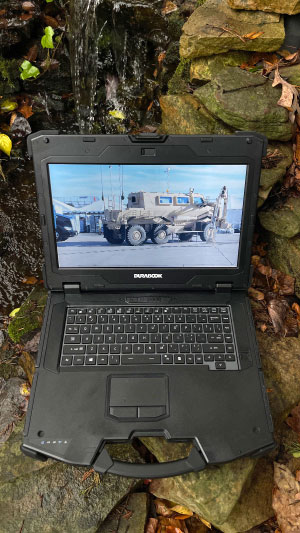 The relevance of the 6-foot drop versus the 4-foot drop mandated by the government Department of Defense standard and the 3-foot drop semi-ruggeds can usually handle is clear — when you walk around with a notebook under your arm and you drop it, that's about three feet.
The relevance of the 6-foot drop versus the 4-foot drop mandated by the government Department of Defense standard and the 3-foot drop semi-ruggeds can usually handle is clear — when you walk around with a notebook under your arm and you drop it, that's about three feet.
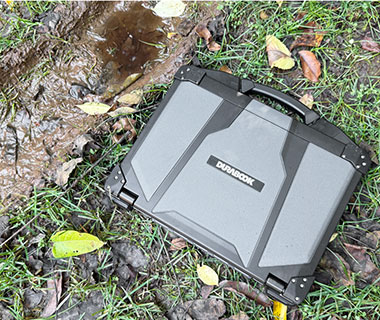 But when you drop it while standing or walking and using it — which almost inevitably happens at some point — that drop is more like four feet or more. Should what is likely to happen be the very limit? No, it's better to have a margin of error. Hence Durabook's decision to have the Z14I survive six foot drops. That way, it can also survive falling off a loaded truck or other industrial or military vehicles.
But when you drop it while standing or walking and using it — which almost inevitably happens at some point — that drop is more like four feet or more. Should what is likely to happen be the very limit? No, it's better to have a margin of error. Hence Durabook's decision to have the Z14I survive six foot drops. That way, it can also survive falling off a loaded truck or other industrial or military vehicles.
On the sealing front, Durabook claims IP66-level protection for the Z14I. The first "6" means complete protection against dust, and the second "6" means protection against high pressure water jets from all directions. Rain won't even be an issue.
As for the operating temperature range, the Z14I specs claims an impressive -4°F to 140°F (-20°C to 60°C), which means the laptop can be used virtually anywhere.
According to Durabook, the Z14I has been MIL-STD-810H certified for drop, shock, vibration, rain, dust, altitude, freeze/thaw, high/low temperature, temperature shock, humidity, explosive atmosphere, solar radiation, salt fog, and fungus resistance. It also has been MIL-STD-461G certified for conduction, radiation, conducted susceptibility, and radiated susceptibility. We'd like to see these certifications published on the Durabook website so that prospective customers can see the exact testing parameters.
Summary: The DURABOOK Z14I fully-rugged laptop
With the updated second generation of its Z14I fully-rugged laptop, Durabook now has a thoroughly modern tool for customers who require high-performance computing power out there in the field, in vehicles, on the shop floor, or wherever else a tablet or a handheld or even a semi-rugged laptop just won't do. It's a big, attractive, impressive machine with a very bright, reflection-free 14-inch wide-format display, great connectivity, very good battery life, and excellent performance.
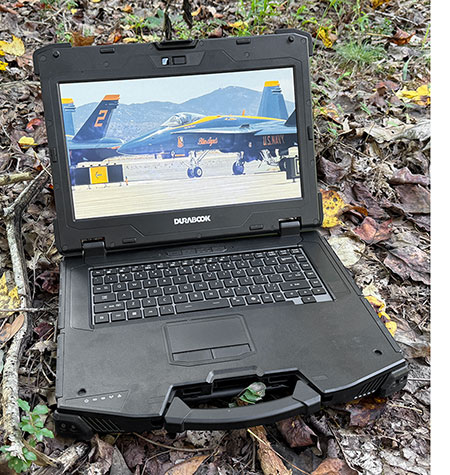 In terms of ruggedness, the fanless DURABOOK Z14I meets or exceeds fully-rugged class standards. The laptop's 6-foot drop spec provides a good safety cushion past most common drop scenarios, and its ingress protection rating — increased to IP66 — means it can handle anything short of full immersion.
In terms of ruggedness, the fanless DURABOOK Z14I meets or exceeds fully-rugged class standards. The laptop's 6-foot drop spec provides a good safety cushion past most common drop scenarios, and its ingress protection rating — increased to IP66 — means it can handle anything short of full immersion.
DURABOOK laptops have always been strong performers, and that tradition carries on with the Z14I. Available with a choice of four Intel Core Ultra Series 1 processors, the laptop scored excellent overall benchmark results.
The DURABOOK Z14I has a 1920 x 1080 pixel wide-format 1,200 nits display that controls reflection and glare well. Note that these processors include an integrated neural processing unit (NPU) and can optionally be equipped with an NVIDIA RTX A500 GPU, making the Z14I capable of supporting complex graphics as well as emerging AI applications in the field. Equipped with just the standard battery, our review machine scored over ten hours in our battery test.
The starting price of the DURABOOK Z14I is quite a bit higher than that of the company's semi-rugged laptops, but in line or below that of the fully-rugged competition. Note that DURABOOK computers are built-to-order and available in a wide range of configurations and the choice of many options that can drive up the price.
Designed for the extreme conditions faced by military, industry, field service personnel, and similar demanding deployments, the DURABOOK Z14I, with its magnesium alloy chassis and bottom, large protective bumpers, and exceptionally solid construction should hold up for a long time.
With the DURABOOK Z14I, Durabook has a strong and very competitive offering in the hotly contested market of fully-rugged laptops. And it is a machine that offers exceptional versatility and expandability.
— Conrad H. Blickenstorfer, September 2025
|
DURABOOK Z14I fully-rugged laptop
Specs
|
| Status |
Update 09/2025
|
| Product type |
Fully-rugged notebook computer
|
| Processor |
Intel 14th Gen (Meteor Lake) Core Ultra 7 U165 (tested)
Intel 14th Gen (Meteor Lake) Core Ultra 7 U155
Intel 14th Gen (Meteor Lake) Core Ultra 5 U135
Intel 14th Gen (Meteor Lake) Core Ultra 5 U125
|
| CPU speed |
Core Ultra 7 U165: max Turbo Boost speed 4.9GHz), 12MB cache
Core Ultra 7 U155: max Turbo Boost speed 4.8GHz), 12MB cache
Core Ultra 5 U135: max Turbo Boost speed 4.4GHz), 12MB cache
Core Ultra 5 U125: max Turbo Boost speed 4.3GHz), 12MB cache
|
| CPU Smart Cache |
All CPU options have 12MB Intel SmartCache
|
| CPU Thermal Design Power |
15/57 watts (all)
|
| OS |
Windows 11 Pro
|
| Graphics |
Intel Graphics, optional NVIDIA GeForce RTX A500
|
| Memory |
16GB to 64GB DDR5-5600MHz in two 204-pin SODIMM sockets |
| Display type |
Sunlight-readable transmissive DynaVue TFT with stealth and night vision modes, anti-glare coating, 1,200-nits luminance
|
| Display size and resolution |
14.0"/1920 x 1080 pixel (157 ppi) FHD
|
| Digitizer/Pens |
10-finger capacitive multi-touch
|
| Keyboard |
Waterproof 88-key membrane keyboard, with LED backlight
|
| Storage |
Quick-release main storage 256/512/1TB/2TB NVME PCIE Solid State Disk; optional OPAL 2.0 SSD; optional 2nd storage (NVME PCIE SSD); optional 3rd storage (SATA SSD)
|
| Multimedia Pocket |
optional Super Multi DVD-RW Drive OR optional 2nd Battery Pack OR optional 3rd storage (SSD)
|
| Slots |
1 x microSDXC Card, 1 x Dual SIM (Nano SIM + eSIM), 1 x SmartCard reader, 1 x ExpressCard 54 OR 1 x PCMCIA Type II
|
| Housing |
Magnesium alloy chassis with port covers |
| Temperature |
-4° to 140°F (-20° to +60°C)
est: |
| Humidity |
5 to 95% non-condensing |
| Vibration |
MIL-STD-810H tested
|
| Ingress protection |
IP66 |
| Explosive Atmosphere |
ANSI/ISA 12.12.01-2000, Class I, Division 2
|
| EMI |
NA |
| Solar Radiation |
MIL-STD-810H |
| Salt Fog |
MIL-STD-810H |
| Altitude |
MIL-STD-810H |
| Shock: Transit Drop |
MIL-STD-810H, Method 516.6, Procedure IV (26 6-foot drops to plywood over concrete) |
| Certifications |
FCC, DOC+ FCC ID, CE |
| Size (inches) |
14.0 x 11.0 x 2.0 inches (356 x 280 x 50 mm) including carry handle |
| Weight |
7.94 lbs (3.6kg); 8.75 pounds as tested with battery, optical drive, and handle.
|
| Power |
Hot-swappable 6-cell 10.8V, 7,800 mAH 84.2 watt-hour Li-Ion ("16 hrs."), 5-min bridge battery,; optional second 6-cell 10.8V, 4.700 mAH 50.8 watt-hour battery |
| Camera |
Integrated 2-megapixel webcam with privacy shutter
|
| Security |
Intel vPro (per CPU options), TPM 2.0, NIST BIOS compliant, easy removable SSD, Smart Card reader default, Stealth mode, Kensington lock, Night vision mode; optional: fingerprint scanner; RFID reader
|
| Wireless |
Intel Dual Band Wi-Fi 6 BE200, Bluetooth 5.4; optional: uBlox NEO-M8N GPS, 4G LTE multi-carrier mobile broadband, RF antenna pass-through for GPS, WWAN, and WLAN
|
| Interface |
1 x USB 3.2 Gen2 Type-A with DP support, 1 x USB 3.2 Gen2 Type-A, 1 x USB 2.0 Type-A, 1 x USB 3.2 Gen2 Type-C, 1 x Thunderbolt 4 Type-C, 2 x RJ45 10/100/1000, 2 x DB9 RS232 serial , 1 x VGA, 1 x HDMI Type-A, audio in/out, 41-pin pogo dock
|
| Price |
Starting MSRP US$3,599 |
| Contact |
Durabook
|
| Website |
DURABOOK Z14I page |
| Brochure |
 DURABOOK Z14I brochure DURABOOK Z14I brochure |
| Warranty |
3-Year DURABOOK 3-D warranty |
| Contact |
Durabook, 48329 Fremont Blvd., Fremont, CA 94538, 510-492-0828 |
